Delivered through private philanthropy, in a public-private partnership underpinned by a common vision shared with architects and the Greek Government, three new state-of-the-art public hospitals are being built in different parts of Greece, to offer equitable and high-quality medical care for all.
The opening keynote on the second day of European Healthcare Design was dedicated to this major project, which offered insights into an alternative type of public-private partnership unlike those commonly used in healthcare. The three hospitals – a general hospital in Komotini; a children’s hospital at Thessalonoiki; and a third in Sparti – seek to help establish a new standard in public healthcare, one that is baked into their design and clinical and operational planning. 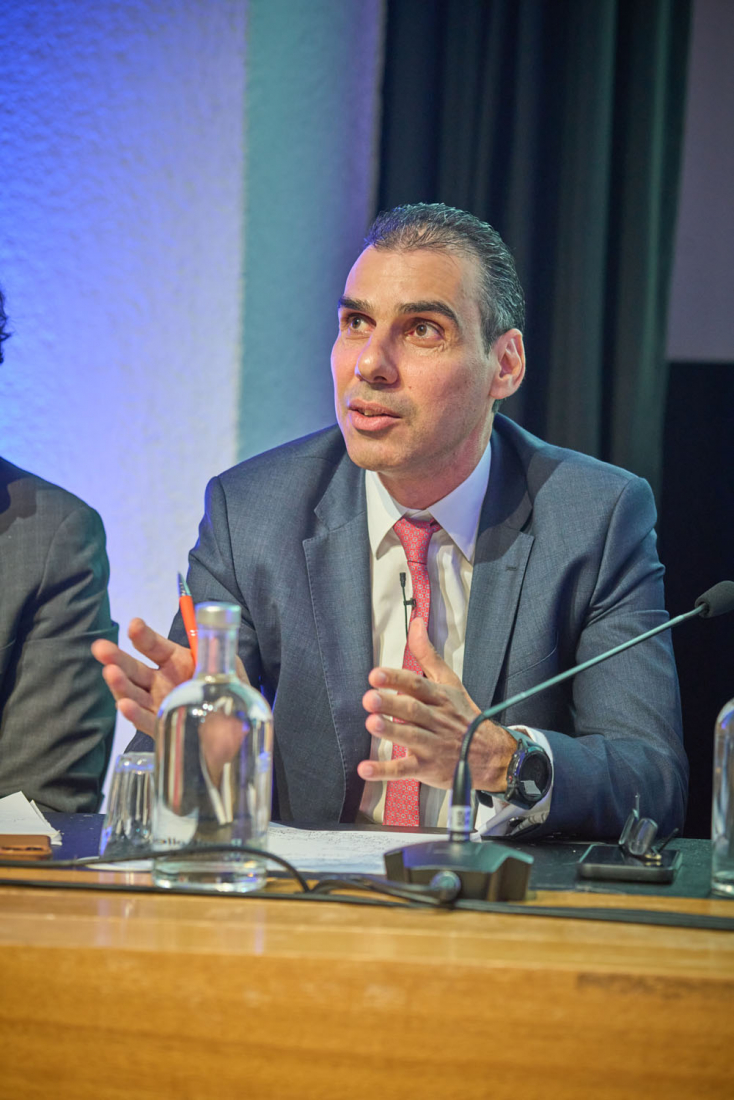
And as Marios Themistocleous, deputy minister of health at the Hellenic Ministry of Health (pictured top right), explained, the design and construction of the three hospitals will feature four innovations. “It will be the first time a public hospital has only single or double rooms,” said the minister. “The majority of the rooms in public hospitals are four and above.” It will also be fully digitalised, serving as an exemplar for all hospitals in the Greek health system and internationally. Significant attention has been paid to the hospital surroundings to create a healing environment, and the hospital is also expected to achieve LEED Platinum certification.
“The aim is not just to replace hospitals in decline but also to set new standards of healthcare and healthcare design,” explained Elianna Konialis, grant manager of the SNF Health Initiative at the Stavros Niarchos Foundation.
The Foundation, which was set up in 1996, launched its Global Health Initiative (GHI) in 2017-18. An umbrella of 70 grants in Greece and internationally, with a total commitment of more than $1bn, the overarching aim of the GHI is to support efforts to strengthen access, quality and equity in healthcare. It comprises five programmatic pillars of support: infrastructure (12 projects); equipment (seven projects); training, knowledge exchange and partnerships (18 projects); mental health (27 projects); and science, technology and innovation (seven projects).
In 2017, the SNF received an application to renovate the largest hospital in the Greek capital – the Evangelismos General Hospital of Athens. “We don’t want to move on our own,” said Panos Papoulias, chief operating officer of the Stavros Niarchos Foundation (pictured second, left). “It’s important for us to have the input of the community and elected officials. So, we asked the Government at the time and we were told it would be more beneficial for the health system to look at the three hospitals. A Memorandum of Understanding followed in 2018 with the Greek State and ratification of the grant agreement on the three hospitals between SNF and the Greek State in September 2018.”
SNF has undertaken the design, construction and outfitting of the three hospitals, while the Greek state has undertaken accompanying infrastructure works for their connection with public utilities and road networks, as well as staffing and future operating expenses. The three new SNF hospitals are slated for delivery to the Hellenic Ministry of Health towards the end of 2026, as part of a turnkey solution ready for immediate operation under the Greek national health service.
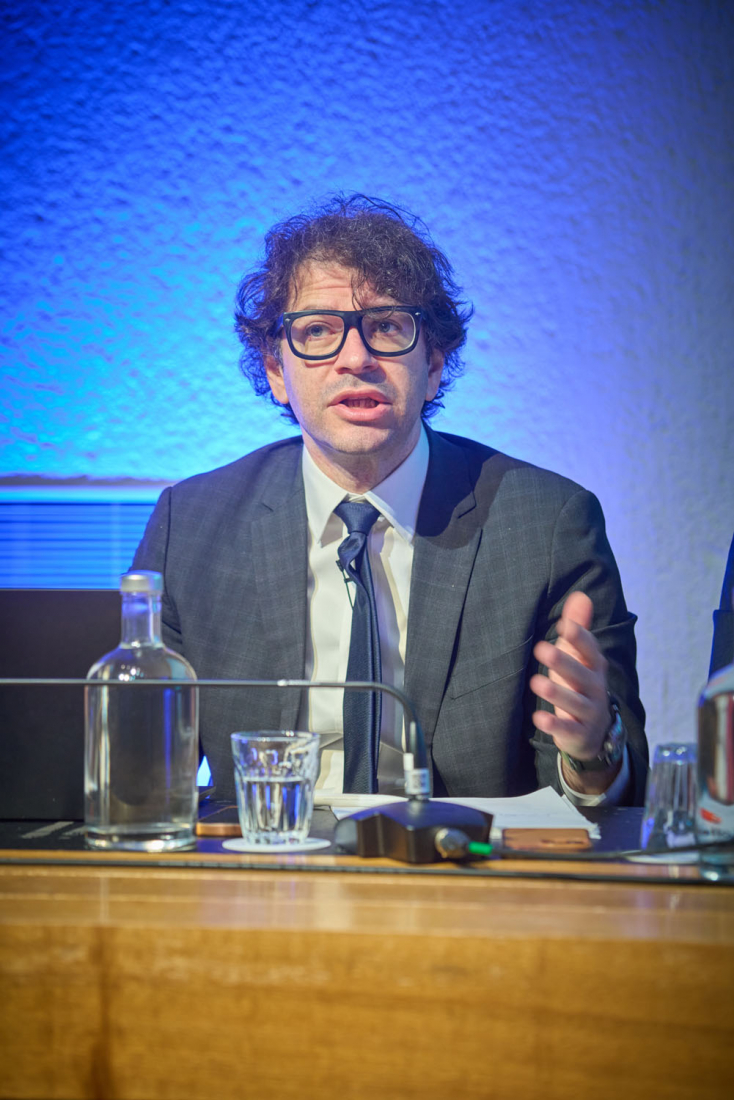 Underpinning the collaboration
Underpinning the collaboration
The collaboration between the public and the private partnership has been strengthened through various means – one of which is the convening of special advisory committees every month. The committees are comprised of stakeholders from the Ministries of Health, Infrastructure Works, Digital Governance, Education and Finance, regional health authorities, and local hospitals in the three locations, as well as SNF, the project manager and the contractor.
“We’ve arranged 62 so far and these committees are not just there to solve problems but also to ratify specific decisions without return, on behalf of all stakeholders,” explained Papoulias.
Another important instrument is end-user consultations. When the SNF University Pediatric Hospital of Thessaloniki was being built, it looked more like a general hospital, so the process was paused, reconvened, and the solution the team came up with was a second building with non-clinical functions.
SNF was focused on ensuring the plans and designs stayed true to their ambition, and it is not afraid to seek out public opinion to ensure the projects do not deviate from their stated objectives. Consequently, all clinical layouts and medical equipment were consulted on, and minimum level of specifications were agreed. The special purpose vehicle set up by the Foundation to build the hospitals carried out the procurement of the medical equipment, safeguarding, and fulfilling the minimum level of specs.
“We take that package of medical equipment and give it to the contractor as a nominated subcontractor package to go into the hospitals,” said Papoulias. “The difficult part of the negotiations of the medical equipment packages was that people had forgotten how to do deals in an inflationary environment.”
One project, three hospitals 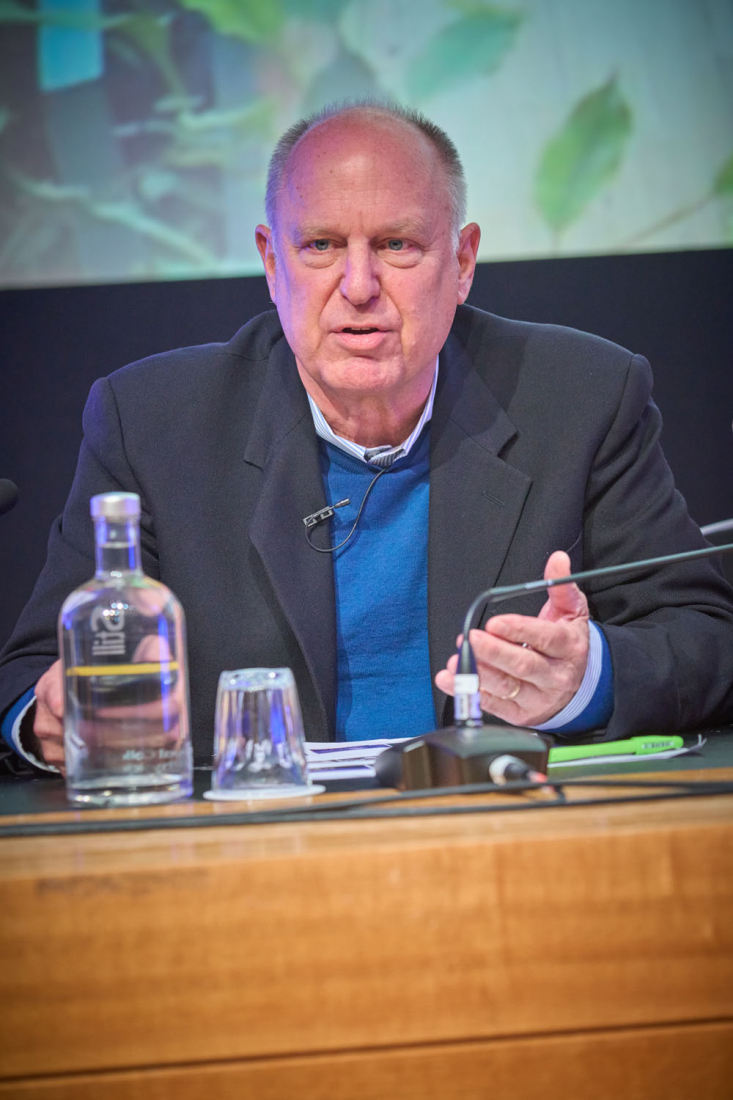
Describing the designs of the hospitals in more detail were Mark Carroll, architect and partner at Renzo Piano Building Workshop (RPBW) (pictured third, right), and his colleague, Rafaella Parodi (pictured fourth, left). Their involvement in the project began in 2018, working alongside specialist healthcare design practice Llewelyn Davies.
“The project was conceived in sections,” said Carroll. “We say it’s one project because these three hospitals have more similarities than differences – for example, embedding them in natures, trees and vegetation, and having a photovoltaic array to be sustainable.”
Taking the example of Komotini, he showed how the ground plane comprised an inviting space with “views in, out and through”, dedicated to public functions, including the lobby, reception area, education, and day patient services. Above the ground plane is the mass of the building, with the wards “swimming in the canopies of the trees”. Lower levels are dedicated to more technical functions, including the emergency room, the ICUs, and the operating theatres. “Again, we like to bring in natural light and views to the gardens that surround this building,” said Carroll, highlighting architectural features such as large windows, sunken terraces and patios.
He described the fourth element, a photovoltaic (PV) array, as “a flying carpet or canopy”. Emphasising the design studio’s focus on sustainability, he explained: “LEED Platinum is what we’ll achieve and also ‘zero-carbon ready’ – everything is electrical. The PV array will produce up to 30 per cent of the hospital’s needs over a year. And as the electrical grid becomes greener, the building will become greener and more sustainable. PV arrays are not something that is slapped on top of the roof, it’s an architectural feature. They help provide shade for many areas.”
Presenting the University Pediatric Hospital of Thessalonoiki, Parodi, an architect and associate at RPBW, first highlighted the nature of the site, which is just outside the city on a hill in the countryside, providing striking views of the surrounding area.
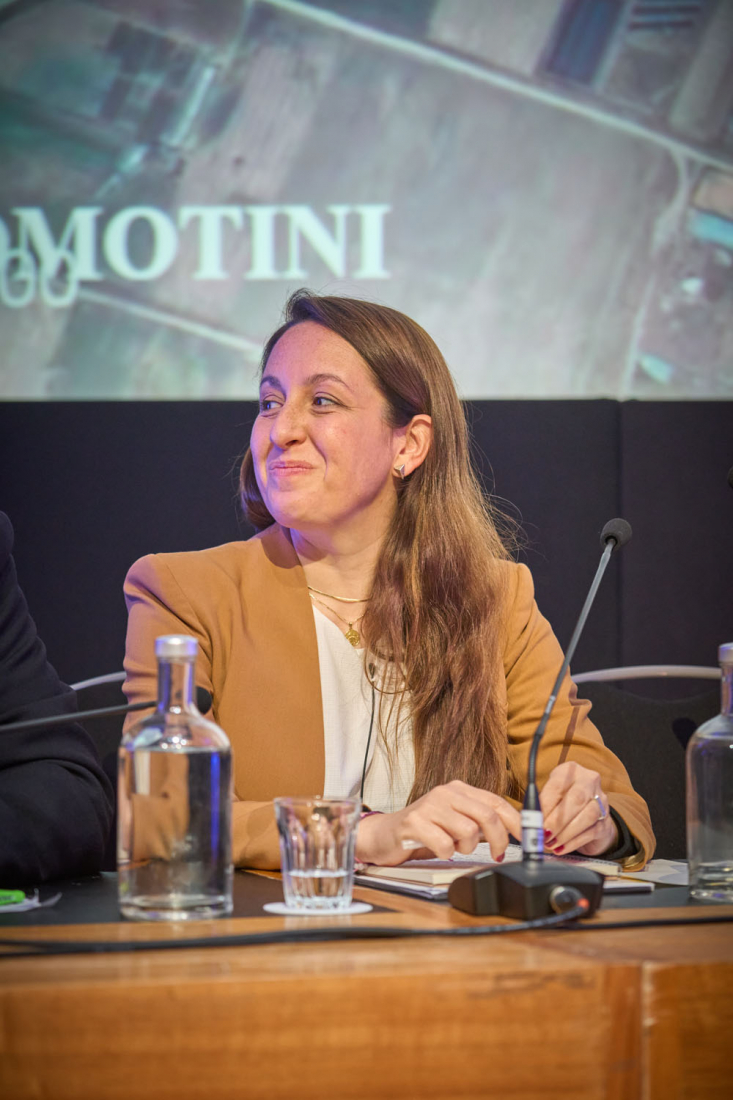 “The programme of the hospital, developed with Llewelyn Davies in the past year, hosts 247 beds,” she said. “The ratio is 50 per cent single rooms and 50 per cent double rooms. The hospital includes a lot of the clinical functions, including the emergency department, the ICU unit divided between the PICU and NICU, outpatient and day cases, and departments dedicated to imaging. Also, we have a lot of functions dedicated to the university and research.”
“The programme of the hospital, developed with Llewelyn Davies in the past year, hosts 247 beds,” she said. “The ratio is 50 per cent single rooms and 50 per cent double rooms. The hospital includes a lot of the clinical functions, including the emergency department, the ICU unit divided between the PICU and NICU, outpatient and day cases, and departments dedicated to imaging. Also, we have a lot of functions dedicated to the university and research.”
She added: “The main hospital comprises two buildings hosting the inpatient rooms and, below, all the clinical functions. Then we have the children and adolescent mental health unit to the side, as well as a part dedicated to the university and research labs. Finally, we have an area dedicated to the production of energy, which is the energy centre.”
Re-underlining the importance of healing architecture – one of the four innovations highlighted by Deputy Minister of Health Marios Themistocleous at the outset of the keynote – Parodi also stressed the importance of landscape design and nature. “In this project, we will be planting 800 new trees, which will become a park,” she said. “Some of that will be open to the public for use by the community. Some of that will be a little more protected and dedicated to the use of the hospital.
Response to the financial crisis
The project, and indeed the wider SNF Global Health Initiative, should also be seen in the context of Greece’s response to the financial crisis of 2007-2008, which took a huge toll on the country’s health service. Konialis explained that at the time, the Foundation received “countless requests and had to respond to public hospitals and health centres coming to us with needs for even the most basic items, both in terms of infrastructure and equipment”.
She highlighted a few SNF health projects that helped the country recover in the immediate decade after the crisis, and which paved the way for the eventual launch of the Global Health Initiative. One important project was the Foundation’s support for the National Center for Emergency Care (EKAV) via the procurement of 143 state-of-the-art ambulances, including their full service and maintenance for a period of eight years and the digital upgrade of the EKAV operations centre.
In regard to upgrading the call centre, there was some resistance initially, but this soon subsided during the financial crisis. Papoulias explained: “These types of PPPs with the philanthropic sector are useful to instil and plant the seeds of change that might be very small in the grand scheme because they only pertain to one project, but they make structural change that will then be followed up. The new call centre increased the efficiency of the new ambulances by 30 per cent, so we got about 140 or so ambulances but it was almost like getting 200. Now, response and services are much better.” 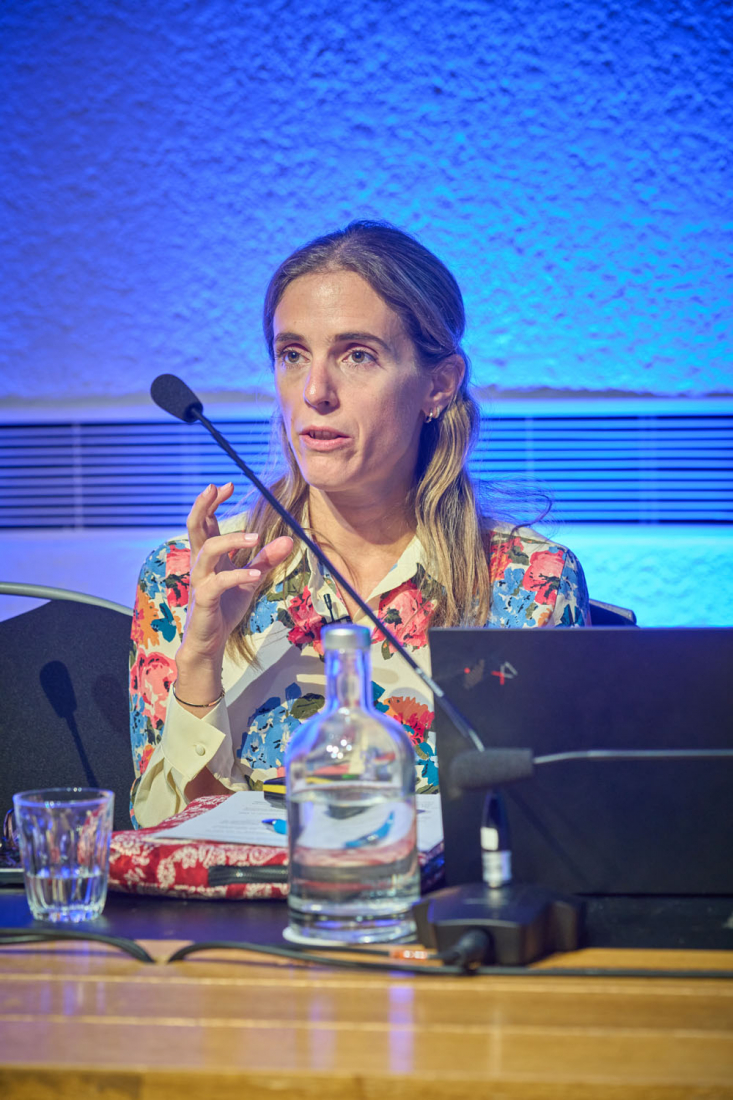
Intensive care is another essential element to the SNF’s work under the GHI. “During the years of the Covid-19 pandemic, the PPP model we had under the GHI served as a vehicle to implement, in record time, the expansion of ICU units in 15 public hospitals across Greece, which added 175 new beds in capacity,” noted Konialis (pictured fifth, right).
The GHI is also focused on education. “We’re very aware that infrastructure, new facilities and state-of-the-art equipment would be nothing without the people who care for the patients on a day-to-day basis,” explained Konialis. “We’re making a very big effort to invest in education and training through five-year educational programmes that are set up, designed, innovative in their delivery model.
One such example is supporting the five-year TraumaEdu programme which, among others, includes the ATLS (advanced trauma life support) and ATCN (advanced trauma care for nurses) training modules. Through an innovative collaboration between the American College of Surgeons and the Greek State, the ATLS has been included as a course of the Athens School of the Medicine, so that every medical school graduate can become a trained ATLS certificate holder before graduation.
For more than 25 years, the Stavros Niarchos Foundation’s approach to empowering humanity has guided almost 5500 grants totalling more than $3.7 billion to nonprofit organisations in 134 countries. With its aims to improve access to quality healthcare
for all and empowering frontline providers, it offers an alternative vision of how a public-private partnership can work, supported through philanthropy – more hands-on during the design and construction process, while adopting a more passive partnership role, while still very supportive, once buildings and projects are up and running.
With health systems wrestling with huge problems around capacity, access, equity, sustainability – and, above all, cost, a philanthropic public-private partnership model could become a greater part of the solution in many more countries around the world in the years ahead.

